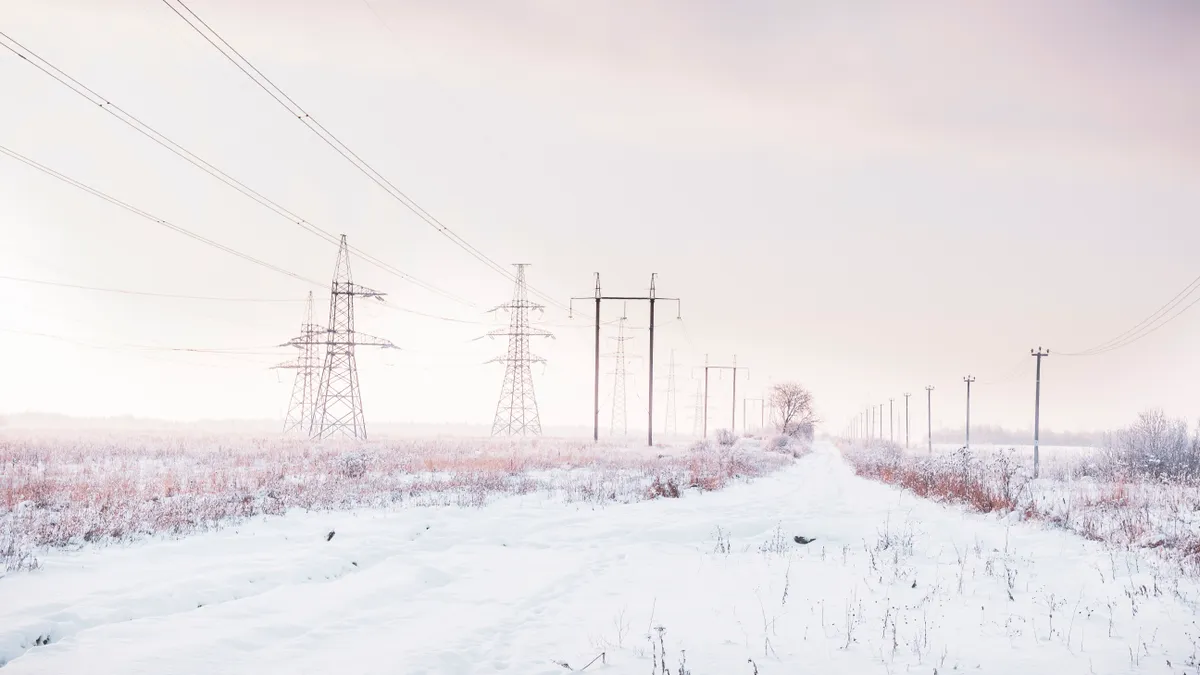Despite previous warnings, U.S. power plants remain vulnerable to not working during bitter cold, according to an initial assessment of Winter Storm Elliott prepared by the Federal Energy Regulatory Commission and the North American Electric Reliability Corp.
About 70,000 MW was unable to run in frigid weather in late December across the Midwest and Eastern United States, leading to rolling power outages of more than 5,000 MW in the Southeast, according to a presentation at FERC’s monthly meeting Thursday.
The majority of power plant outages during the cold snap were caused by problems with freezing, fuel supply, and mechanical and electrical issues, FERC staff said, noting those problems occurred in the last five major extreme cold spells that have happened in the U.S. since 2011.
Like in Winter Storm Elliott, there was a sharp drop in natural gas production and electric use was higher than forecast in some areas during some of those cold events, according to the presentation.
The need to weatherize power plants and other recommendations issued after previous cold weather events remain valid and if they had been fully implemented would have eased the problems during Winter Storm Elliott, FERC staff said.
"We're seeing the same three causes, so therefore we think that it makes all the sense in the world to continue full steam ahead on implementing prior recommendations," Heather Polzin, reliability coordinator for FERC’s enforcement office, said about power plant outages.
Anticipating grid vulnerabilities is becoming harder in the face of extreme weather, according to FERC Commissioner Allison Clements.
“It shows that reserve margins are an increasingly inadequate tool to predict winter sufficiency,” she said. “Two of the regions that suffered rolling outages during Winter Storm Elliott — TVA and Duke [Energy] — were not even identified in NERC’s 2022-23 winter assessment as anything more than a low risk of load shed.”
FERC Commissioner Mark Christie said weatherizing power plants raises market issues.
"It's fine to mandate weatherization, but you can't separate that issue from the issue of market design, and how do you pay for it?" Christie said. "Weatherization requires capital expenditures. Energy markets don't compensate for capital expenditures. That's what the capacity market was set up to do."
NERC oversees grid reliability, but no entity is responsible for making sure the gas system is reliable, FERC acting Chairman Willie Phillips said.
"I believe this is a reliability gap," Phillips said during a media briefing. "I, once again, call for some entity to have responsibility for the gas system's reliability. It doesn't have to be FERC, but someone needs to have responsibility for that."
With support from FERC and NERC, the North American Energy Standards Board is considering options for better harmonizing the electric and natural gas systems.
In the first of three planned meetings, the NAESB Gas-Electric Harmonization Forum meets June 16 to discuss 19 proposed recommendations for better meshing the gas and power sectors. The recommendations call for increased information sharing between power plant operators and pipeline companies. They also call for a study to determine if the natural gas system can meet future power plant needs.
Separately, FERC approved two rules Thursday that aim to improve grid reliability during extreme weather.
One rule directs NERC to require transmission system planning for extreme heat and cold weather over wide geographical areas, including studying what would happen if power plants and transmission equipment go offline at the same time. Grid planners would have to take actions to address any issues found in their studies.
In the other rule, the agency ordered regional transmission organizations and other transmission providers to submit one-time reports describing their current or planned policies and processes for conducting extreme weather vulnerability assessments and reducing those risks.























